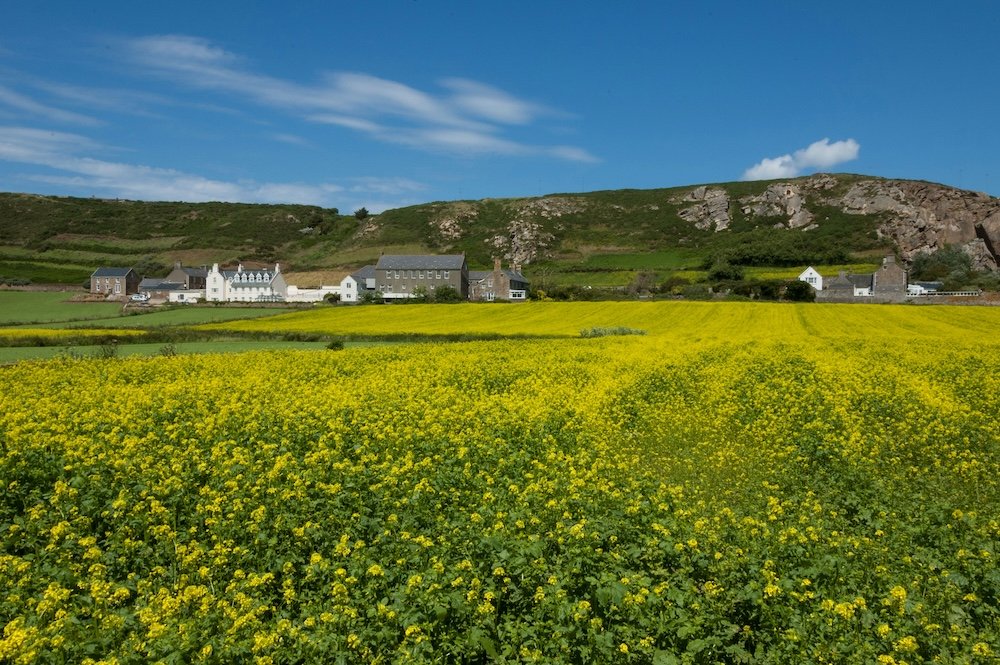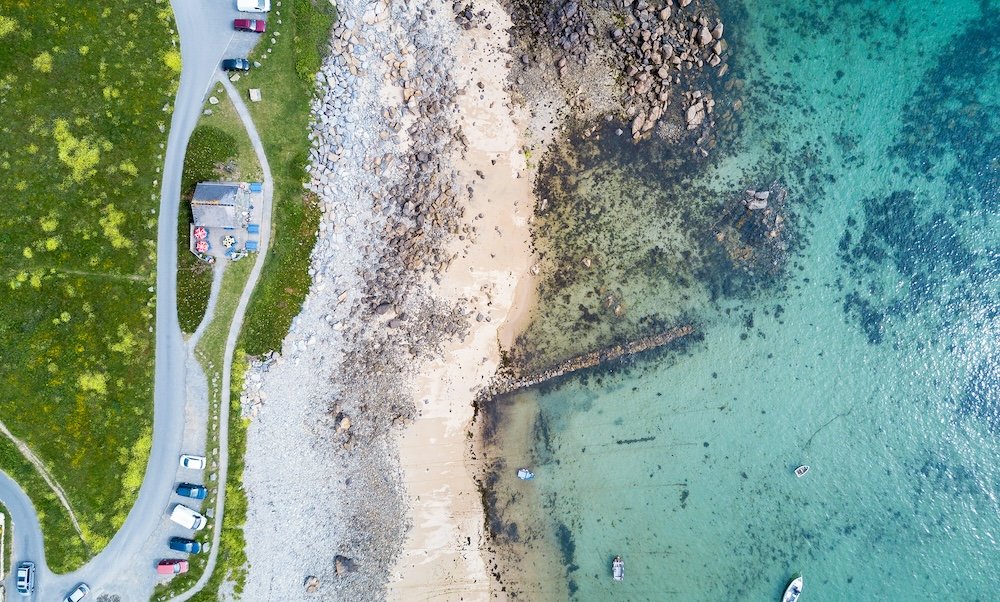
Want to discover when is the best time to visit Channel Islands?
Nestled in the English Channel off the coast of Normandy, the Channel Islands offer a unique blend of British and French influences, stunning landscapes, and rich history.
This archipelago, consisting of Jersey, Guernsey, Alderney, Sark, and Herm, attracts visitors with its mild climate, picturesque scenery, and friendly communities.
However, to fully enjoy what these islands have to offer, pinpointing the best time to visit Channel Islands is crucial.
Choosing the right time for your visit can dramatically enhance your experience.
Weather conditions, local events, and tourist traffic vary significantly throughout the year, affecting everything from the accessibility of attractions to the cost of travel and accommodation.
Whether you’re looking to bask in the vibrant cultural festivals of summer or enjoy the tranquil beauty of the islands during the off-peak seasons, understanding the seasonal dynamics is key.
In this article, we will explore various factors that determine the best time to visit Channel Islands.
We’ll break down the year into seasons, discuss the ideal time for specific activities, and share insider tips from locals.
By the end of this guide, you’ll be equipped with all the information needed to plan your perfect trip to these enchanting islands.
Overview of the Channel Islands
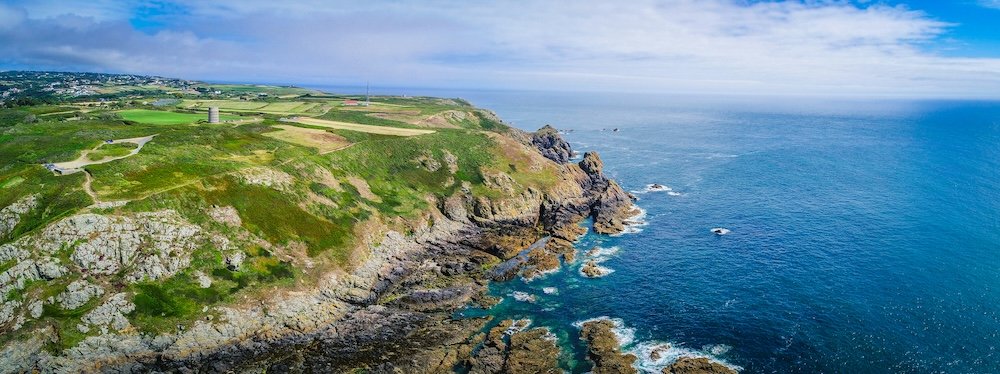
The Channel Islands, a group of British Crown Dependencies, are not part of the United Kingdom but hold a unique political status, where they govern themselves except for international affairs and defense, which are the responsibilities of the UK government.
Located in the English Channel, these islands lie just off the coast of Normandy, France, and have been influenced by both British and French cultures throughout their history.
The proximity to France adds a charming blend of French flair to the distinctly British way of life on the islands.
Geographical and Historical Background
The Channel Islands have a compelling history dating back to the Roman Empire.
Over the centuries, they have witnessed numerous battles, especially during the medieval period when they were a point of contention between France and England.
More recently, they were the only part of the British Isles to be occupied by German forces during World War II, an event that has left a lasting impact on the islands’ landscape and culture.
Geographically, the islands are known for their rugged coastal cliffs, sandy beaches, and rural landscapes, making them a scenic retreat with a climate milder than that of mainland Britain.
Description of the Main Islands
Jersey
As the largest and most populous island, Jersey boasts a vibrant economy centered around financial services, tourism, and agriculture. The island is renowned for its beautiful coastlines, historical sites such as the war tunnels from WWII, and the capital, St. Helier, which offers a mix of modernity and rich history.
Guernsey
Guernsey is known for its relaxed pace of life and the fusion of beautiful landscapes and cultural richness. The island’s capital, St. Peter Port, is often considered one of Europe’s most picturesque seafronts. Guernsey is not only about scenic beauty but also offers a rich tapestry of history and culture, with museums and annual festivals that reflect its heritage.
Alderney
Smaller and more remote, Alderney is ideal for those looking to escape the hustle and bustle of modern life. Its unspoiled landscapes, abundant wildlife, and the presence of historical fortifications give it a distinctive character among the Channel Islands.
Sark
Sark is famous for its spectacular scenery and the fact that it was one of the last places in Europe to abolish feudalism, only doing so in 2008. Cars are banned on Sark, and horse-drawn carriages, bicycles, and walking are the primary modes of transport, providing a tranquil escape from the modern world.
Herm
The smallest of the main Channel Islands, Herm is a picturesque paradise perfect for day-trippers and those looking to enjoy unspoiled beaches and a true break from urban life. It is privately managed and heavily focuses on preserving its natural beauty.
Each of these islands offers a unique experience, contributing to the rich tapestry that makes the Channel Islands a fascinating destination.
Determining the best time to visit Channel Islands largely depends on what each visitor seeks to experience, whether it’s the cultural vibrancy of summer festivals or the peaceful solitude of a winter escape.
Factors Influencing the Best Time to Visit
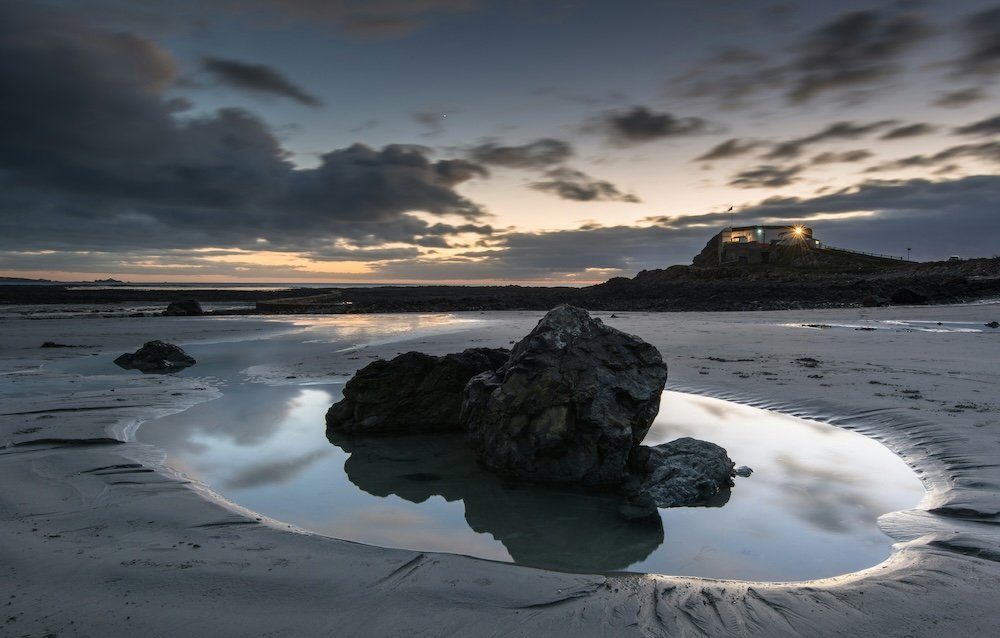
When planning a trip to the Channel Islands, several factors can influence the decision on the best time to visit Channel Islands.
These include varying weather conditions, fluctuating tourist crowds, local cultural festivities, and the accessibility of different islands.
Understanding these elements will help you choose the ideal time for your visit based on your personal preferences and what you hope to experience.
Weather Patterns Through the Seasons
The Channel Islands enjoy a temperate maritime climate, with mild winters and cool summers, thanks to their proximity to the sea.
- Spring (March to May) is characterized by rising temperatures and blooming landscapes. This season sees less rainfall and gradually warming weather, making it a pleasant time for outdoor activities.
- Summer (June to August) offers the warmest weather, with temperatures typically ranging from 15°C to 20°C. This is the perfect time for beach activities, coastal walks, and enjoying the islands’ natural beauty.
- Autumn (September to November) experiences cooler temperatures and more rainfall, especially in November. However, the early autumn period is still appealing, with mild weather and fewer tourists.
- Winter (December to February) is the coolest period, with temperatures often dropping below 10°C. While the islands rarely see snow, the weather can be quite chilly and windy, which might affect ferry services and outdoor activities.
Tourist Seasons and Crowd Considerations
- Peak Season: Summer months are the busiest on the Channel Islands, as the weather is at its best. If you prefer a vibrant atmosphere and don’t mind larger crowds, this is the time to visit. Accommodations and attractions are fully operational but booking in advance is recommended.
- Off-Peak Season: Winter sees the fewest visitors, which could be attractive if you’re seeking solitude or lower prices. Keep in mind that some hotels, restaurants, and attractions might be closed or have reduced hours.
- Shoulder Seasons: Spring and early autumn are considered the shoulder seasons. They offer a good balance with fewer tourists than in summer, mostly pleasant weather, and most tourist services still available.
Local Events and Festivals
Each island has its own set of festivals and events that can enhance your visit:
- Spring: Celebrate the Liberation Day in May, marking the islands’ liberation from German occupation during WWII.
- Summer: Enjoy the summer flower festivals, outdoor concerts, and food festivals that showcase local produce and seafood.
- Autumn: Participate in the Tennerfest, where restaurants offer special menus at reduced prices.
- Winter: Experience unique Christmas markets and New Year celebrations.
Accessibility of Islands
Transportation to and within the Channel Islands can vary by season:
- Air and Sea Travel: Flights and ferry services are more frequent in the summer but can be subject to delays or cancellations due to bad weather in winter.
- Inter-Island Travel: Services like ferries and private boat charters between islands are readily available in the peak season but reduce significantly during the off-peak months.
Seasonal Breakdown: Pros and Cons
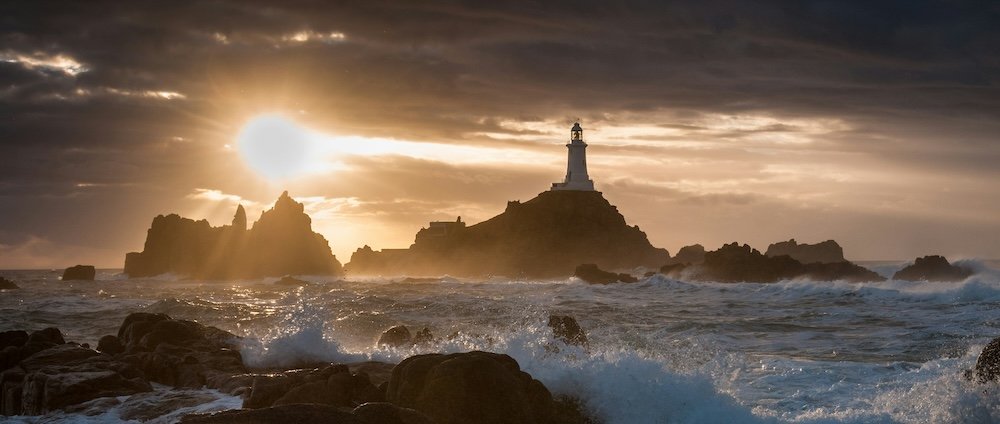
Each season in the Channel Islands brings its own unique advantages and challenges.
Here’s a detailed look at what each season offers, helping you pinpoint the best time to visit Channel Islands for your specific interests.
Spring (March to May)
Weather Conditions: Spring ushers in milder weather, with temperatures gradually rising from about 8°C in March to around 14°C in May. Rainfall decreases, and the islands enjoy longer daylight hours.
Natural Attractions: This is a fantastic time to witness the islands’ flora come to life. The meadows and cliffs are adorned with blooming wildflowers, including orchids and coastal flowers, while wildlife, particularly bird species, become more active.
Events and Festivals: Spring in the Channel Islands features charming events like the Spring Walking Week and the Heritage Festival. These events celebrate the islands’ natural beauty and rich history, offering guided walks and talks that appeal to nature lovers and history buffs alike.
Summer (June to August)
Peak Tourist Season: Advantages and Disadvantages: Summer is the busiest time of the year, attracting the highest number of tourists due to the favorable weather conditions. While the vibrant atmosphere and fully operational tourist amenities are significant pluses, be prepared for higher prices and crowded spots.
Best Activities for Summer: With temperatures averaging between 15°C and 20°C, summer is ideal for beach-going, coastal hiking, and exploring the islands’ outdoor attractions. Water sports like sailing, kayaking, and swimming are particularly enjoyable during these warmer months.
Key Events and Cultural Festivals: The summer calendar is dotted with exciting festivals such as the Jersey International Air Display, the Sark Folk Festival, and the Guernsey North Show and Battle of Flowers, offering a glimpse into the local culture and community spirit.
Autumn (September to November)
Weather and Its Impact on Tourist Activities: Autumn sees a gradual cooling, with temperatures dropping from around 18°C in September to 12°C in November. While early autumn still offers pleasant weather, the increasing rainfall towards the end of the season can dampen some outdoor activities.
Lesser Crowds and Lower Prices: As tourist traffic wanes, those visiting in autumn will benefit from reduced crowds and more competitive prices for accommodations and services. It’s an excellent time for those seeking a quieter visit.
Highlight of Autumn Events: Events like the Tennerfest allow visitors to indulge in local cuisine at reduced prices. Autumn also sees various walking and food festivals that make the most of the season’s offerings.
Winter (December to February)
Climate and Potential for Rough Seas: Winter is the coolest and wettest season, with temperatures often falling below 10°C and an increased chance of storms that can lead to rough seas. This weather can affect ferry services and limit access to some outdoor attractions.
Winter Charm and Christmas Markets: Despite the chill, winter holds its own charm, especially during the festive season. The Christmas markets on Jersey and Guernsey are particularly magical, offering local crafts, foods, and festive activities.
Considerations for Reduced Daylight and Service Availability: Shorter daylight hours and potentially inclement weather mean it’s essential to plan accordingly. Some tourist services may be reduced or closed, so check in advance.
Each season in the Channel Islands has its distinctive pros and cons, making the best time to visit Channel Islands dependent on what you wish to experience.
Whether it’s the lively festivals of summer, the serene beauty of spring, the gastronomic delights of autumn, or the festive spirit of winter, the islands offer enriching experiences all year round.
Best Time for Specific Activities
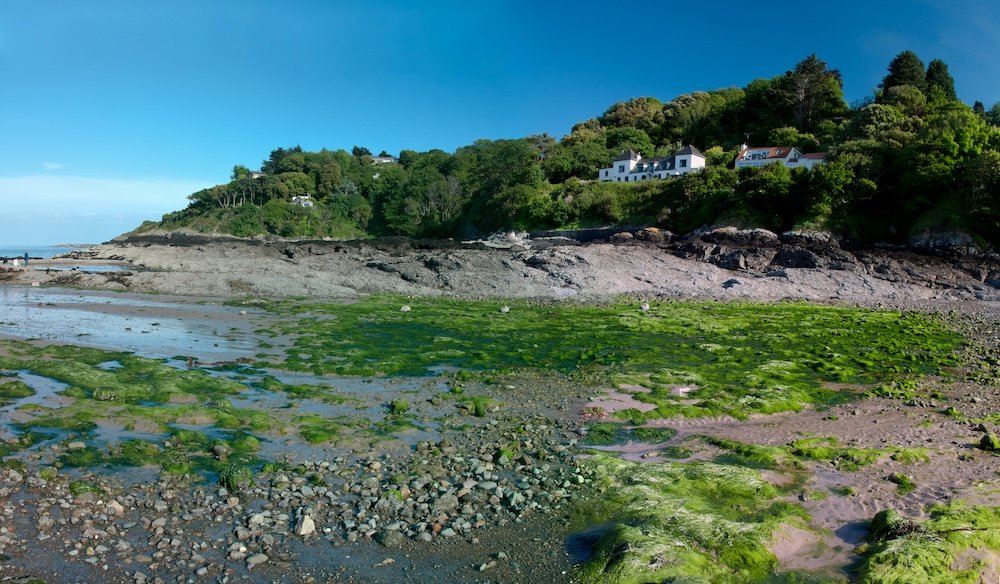
When planning your visit to the Channel Islands, considering what activities you want to engage in can significantly influence your decision on the best time to visit Channel Islands.
Whether you’re an outdoor enthusiast, a culture buff, or seeking a peaceful retreat, each season offers optimal times for different activities.
Best Months for Outdoor Activities
Hiking: Spring (March to May) and early autumn (September and October) are ideal for hiking. The mild weather and less crowded trails make these months perfect for exploring the island’s diverse landscapes without the summer heat.
Bird Watching: The migration periods in spring (March to May) and autumn (September to November) are spectacular for bird watching. The islands serve as a stopover for many migratory birds, providing a unique opportunity for enthusiasts.
Watersports: Summer (June to August) is the prime time for watersports when the sea temperatures are warmer, and conditions are generally calm. Activities like kayaking, paddleboarding, and sailing are most enjoyable during these months.
Ideal Times for Cultural Experiences
Visiting Museums: Winter (December to February) is a great time to explore indoor cultural sites like museums and galleries. With fewer tourists and quieter surroundings, you can take your time to enjoy the exhibits.
Attending Local Festivals: If you’re interested in experiencing the local culture through festivals, the summer months are packed with events that showcase the islands’ heritage and community spirit. From music and food festivals to historical celebrations, there is something happening almost every week.
Recommendations for a Quiet Getaway vs. a Vibrant Tourist Experience
Quiet Getaway: For those looking for a peaceful escape, late autumn (November) and winter (December to February) are recommended. The islands are less crowded, and although some attractions might be closed or have limited hours, you can enjoy the serene environment and slower pace of island life.
Vibrant Tourist Experience: Conversely, if you prefer a bustling atmosphere and full access to all tourist services, summer (June to August) is undoubtedly the best time to visit Channel Islands. The lively festivals, open attractions, and vibrant tourist hubs offer a rich and engaging experience.
Tips for Visiting During Off-Peak Seasons
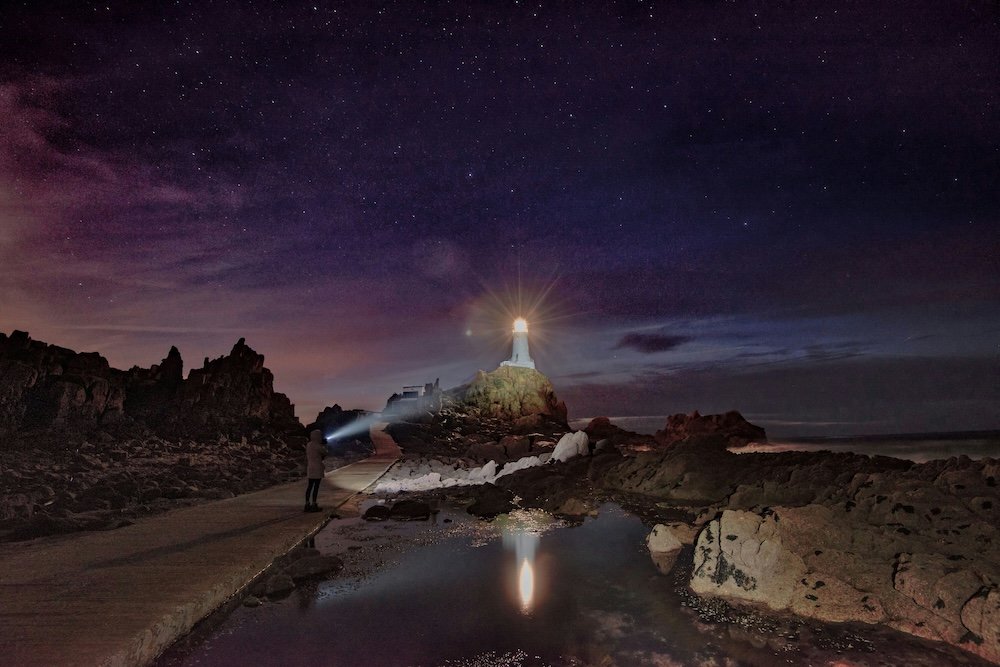
Visiting the Channel Islands during the off-peak seasons, particularly the shoulder months of late spring (late April and May) and early autumn (September and October), offers numerous advantages.
Here are some tips to maximize your experience during these times, including what to pack, how to prepare, and the unique benefits you can enjoy.
Benefits of Visiting During the Shoulder Months
Crowd Avoidance: One of the biggest perks of visiting in the shoulder months is the significant reduction in tourist numbers. This means less crowded attractions, quieter beaches, and more personalized attention at hotels and restaurants.
Milder Weather: Late spring and early autumn in the Channel Islands feature some of the most pleasant weather conditions—warm enough to enjoy outdoor activities without the intense heat of peak summer.
Engaging in Local Life: With fewer tourists, you get a better chance to interact with locals and experience the genuine culture of the islands. This can also be a time when local events, such as small festivals or markets, take place, which are often less commercial and more about community.
What to Pack and How to Prepare
Appropriate Clothing: The weather can be unpredictable during these months, so packing layered clothing is key. Include items such as a waterproof jacket, a warm sweater, and comfortable walking shoes.
Advance Bookings: While it’s off-peak, some popular restaurants and special tours might still require advance booking. Check availability and book early to avoid disappointment.
Check Opening Times: As it’s outside the main tourist season, some attractions and activities might have reduced hours or be closed, especially in late autumn. Always check in advance and plan your itinerary accordingly.
Potential Cost Savings and Exclusive Experiences
Cost-Effective Travel: One of the most attractive aspects of traveling during the shoulder months is the potential for lower costs. Accommodation rates are typically lower, and you may find deals on flights and local transportation.
Exclusive Experiences: Hotels and tour operators are often more flexible during these months and might offer experiences that aren’t available during the busy summer, such as private guided tours or special culinary experiences focusing on local produce.
Festival Participation: While the major summer festivals are over, the shoulder months might host unique local events that allow deeper cultural immersion. Participating in these can provide a more authentic and enriching experience.
Visiting the Channel Islands during the off-peak seasons not only offers the practical benefits of fewer crowds and lower costs but also provides a unique opportunity to see a different side of island life, one that is calmer and more reflective of the local pace and traditions.
With thoughtful preparation and a flexible itinerary, you can enjoy a rewarding and memorable visit.
What the Locals Say
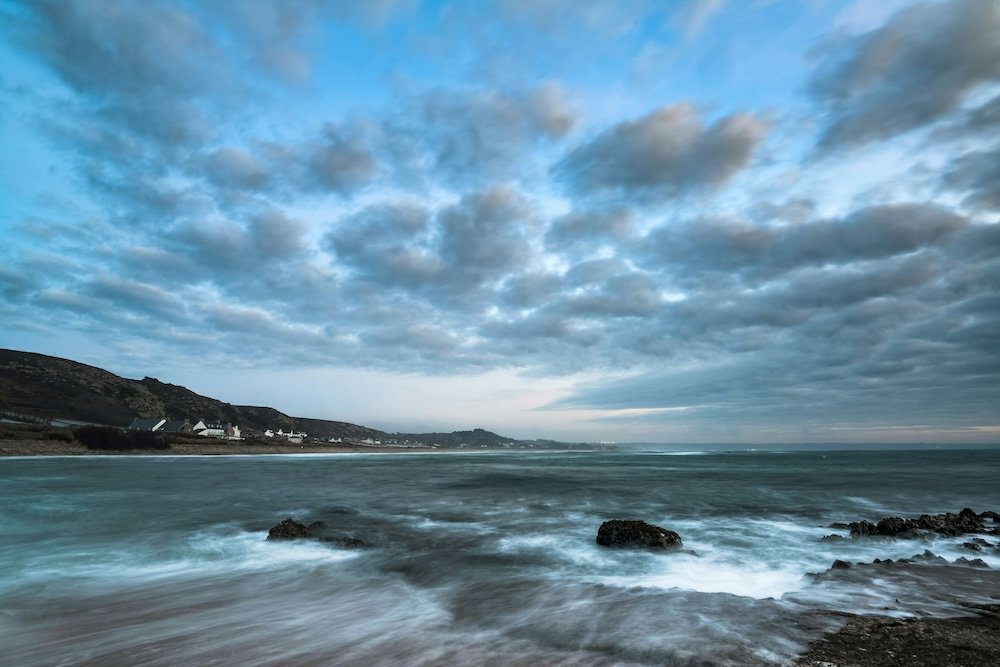
Gaining insights from the local residents can often provide a deeper, more authentic perspective on the best times to visit the Channel Islands.
Locals experience the islands year-round and can offer valuable advice on not only when to visit but also how to get the most out of your stay.
Here’s what some islanders have to say about their favorite times of the year and some lesser-known tips for visitors.
Insights from Local Residents on Their Favorite Times of the Year
Spring Enthusiasts: Many locals cherish the spring, particularly late April and May, when the islands are not yet crowded and the landscape bursts into color with blooming flowers. This is a time for renewal, and the milder weather makes it ideal for exploring the natural beauty without the summer rush.
Summer Advocates: Despite the increase in tourists, some locals love the vibrant summer months for the buzz it brings to the islands. The full swing of activities, open markets, and festivals like the Jersey Battle of Flowers offer a festive atmosphere that many residents enjoy.
Autumn Appreciators: A number of locals prefer the quiet beauty of autumn, especially in September when the sea remains warm enough for swimming but the days begin to cool down. They recommend visiting local orchards for apple picking and enjoying the rich colors of the fall landscape.
Winter’s Calm: For those who love peacefulness, winter is a special time. Locals enjoy the slower pace of life and the community-focused events like Christmas markets, which are less about tourism and more about celebrating with family and neighbors.
Lesser-Known Tips and Advice from the Islanders
Discover Hidden Gems: Locals suggest visiting lesser-known spots that are off the typical tourist path. For example, exploring the quiet coves and beaches of Sark or the inland lanes of Jersey that offer stunning countryside views.
Local Cuisine: Take advantage of the local produce. Islanders recommend visiting local markets and trying seafood caught fresh that day. Each island has its specialties; Guernsey for its dairy products and Jersey for its oysters.
Cultural Insights: Engage with the local culture by attending a parish hall meeting or a local pub quiz night. These are excellent opportunities to mingle with residents and experience the islands as the locals do.
Stay Weather Prepared: Islanders emphasize the unpredictability of Channel Island weather. They advise visitors to always carry a raincoat or umbrella and to dress in layers, as the weather can change several times in a single day.
Conclusion
Choosing the best time to visit Channel Islands depends greatly on your personal preferences, the activities you wish to engage in, and the type of experience you are looking for.
Each season on the islands offers unique opportunities and experiences, making the Channel Islands a wonderful year-round destination.
Recap of the Best Times to Visit Based on Interests and Activities
- Spring (March to May) is ideal for those who enjoy nature, as the islands bloom with flowers and wildlife becomes particularly active. This season is perfect for hiking, bird watching, and enjoying the scenic beauty with fewer crowds.
- Summer (June to August) is the best choice for those seeking a vibrant tourist scene, complete with cultural festivals, lively markets, and ideal weather for beach activities and watersports.
- Autumn (September to November) offers a tranquil atmosphere with milder weather, making it a great time for those who wish to explore the islands without the summer crowds. This season is also rich with culinary experiences, particularly with events like the Tennerfest.
- Winter (December to February) appeals to those looking for a quieter visit and the opportunity to enjoy local traditions and community events, such as Christmas markets and festive celebrations.
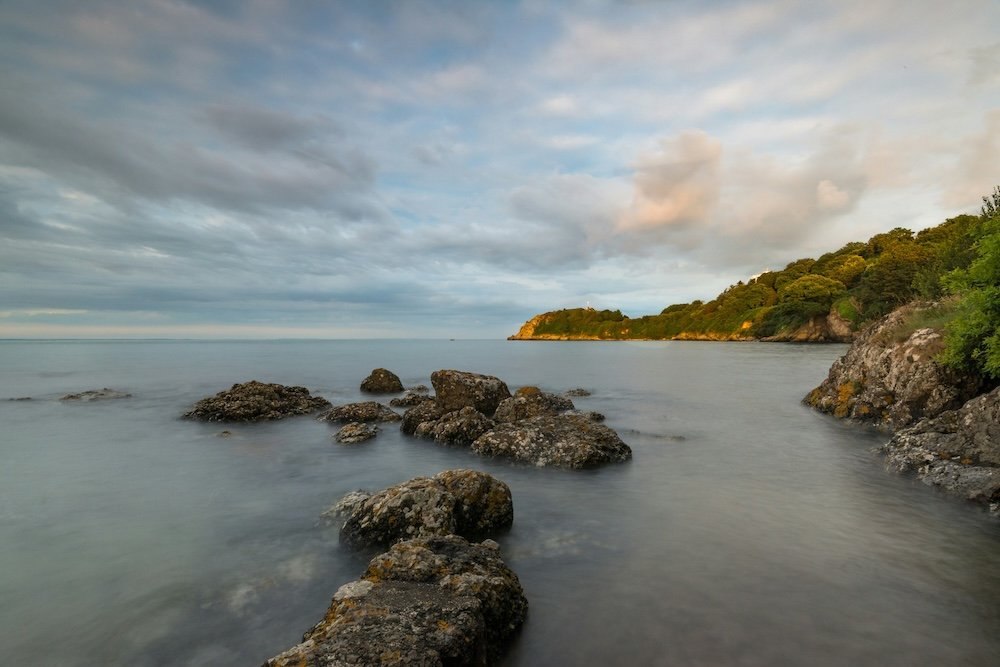
FAQ’s About the Channel Islands:
What are the 7 Channel Islands?
The Channel Islands consist of several islands, with the seven major ones being Jersey, Guernsey, Alderney, Sark, Herm, Jethou, and Brecqhou.
These islands are grouped into two main bailiwicks: Jersey and Guernsey.
Which country owns the Channel Islands?
The Channel Islands are Crown Dependencies of the United Kingdom. They are not part of the UK but are self-governing possessions of the Crown.
This means they have their own administrative systems and are responsible for their own laws and governance, although the UK is responsible for their defense and international representation.
What is so special about the Channel Islands?
The Channel Islands are known for their unique blend of British and French cultures, stunning landscapes, mild climate, and rich history.
They offer a variety of natural and historical attractions, from beautiful beaches and coastal walks to WWII relics and medieval castles.
The islands also have a unique political status that adds to their intrigue.
What language do they speak in the Channel Islands?
English is the primary language spoken in the Channel Islands. However, each island has its historical language; in Jersey, it’s Jèrriais (a form of Norman), and in Guernsey, it’s Guernésiais.
These languages are not widely used in daily conversation today but are part of the islands’ cultural heritage and are taught in schools and promoted through various cultural initiatives.
Why did Britain abandon Channel Islands?
During World War II, Britain decided it was not feasible to defend the Channel Islands due to their proximity to occupied France.
The British government demilitarized the islands and officially abandoned them to German forces, which led to their occupation from 1940 to 1945. This was a strategic decision to focus resources elsewhere.
What currency is used in the Channel Islands?
The Channel Islands issue their own currencies, the Jersey pound and the Guernsey pound, which are not legal tender in the United Kingdom but are pegged to the British pound sterling at par.
Both British and local currencies are accepted interchangeably within the islands.
Are Channel Islands British citizens?
Yes, residents of the Channel Islands are British citizens.
They hold British passports and have the same rights as other British citizens, although there are some local residency and employment restrictions that differ from mainland UK.
Can Brits live in Channel Islands?
British citizens can move to the Channel Islands, but they must comply with local housing and work regulations.
Each island has its own laws regarding who can live and work there, typically requiring a housing license or qualification, aimed at controlling population growth and protecting local employment.
Are Channel Islands UK citizens?
Residents of the Channel Islands are British citizens, but they are not UK citizens, as the Channel Islands are not part of the United Kingdom.
They are Crown Dependencies, which means they have a different constitutional relationship with the UK compared to its constituent countries.
Can you swim in Channel Islands?
Yes, you can swim in the Channel Islands.
The islands are surrounded by clear and relatively pollution-free waters, making them ideal for swimming, especially during the warmer summer months.
Beaches like St. Brelade’s Bay in Jersey and Cobo Bay in Guernsey are popular spots for swimming and other water activities.
What is the prettiest Channel island?
While beauty is subjective, many consider Sark to be one of the prettiest Channel Islands due to its dramatic and unspoiled landscapes.
Sark is car-free, offering a peaceful atmosphere with stunning cliff-top views, secluded coves, and dark skies perfect for stargazing.
Can you stay on the Channel islands?
Yes, you can stay on the Channel Islands. They offer a range of accommodations, from luxury hotels and cozy bed and breakfasts to self-catering cottages and campsites.
Each island has its unique offerings, catering to different tastes and budgets.
